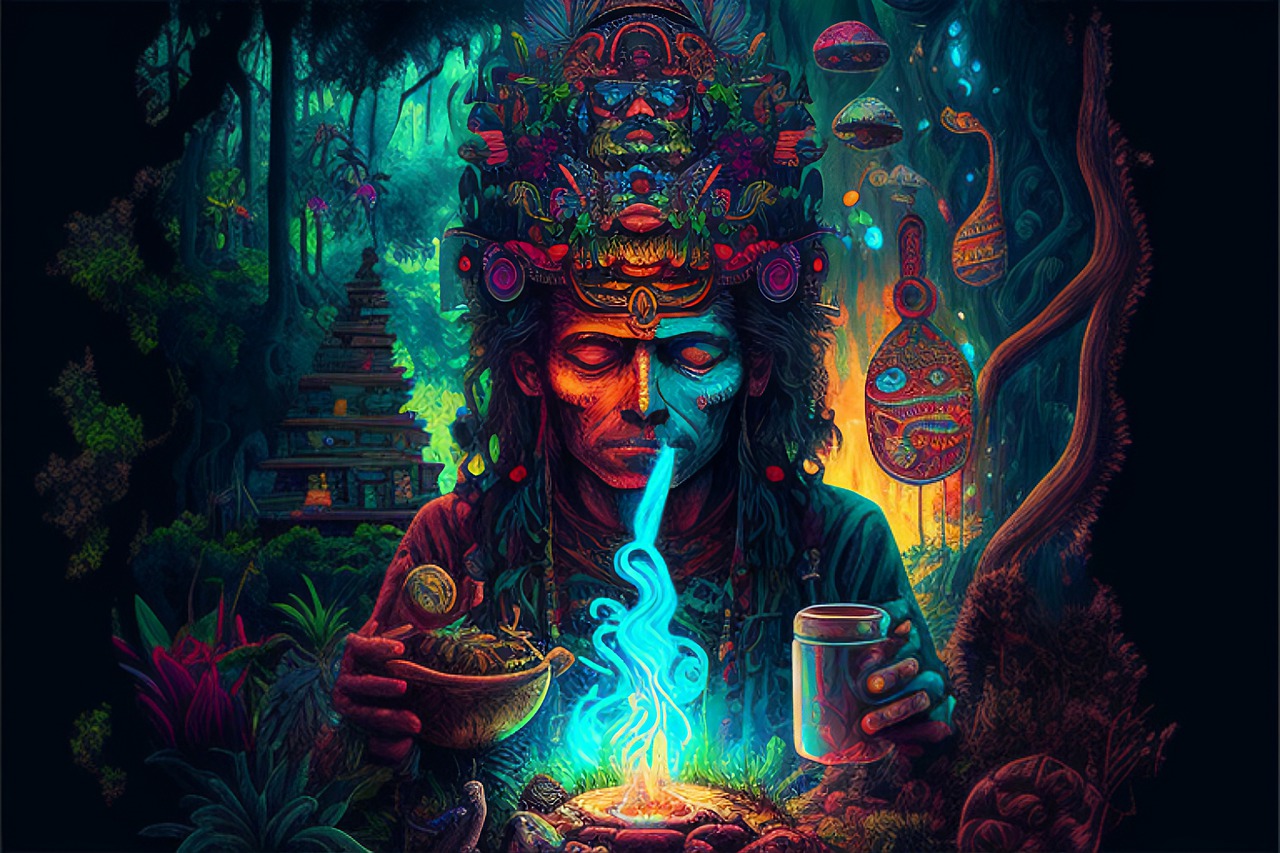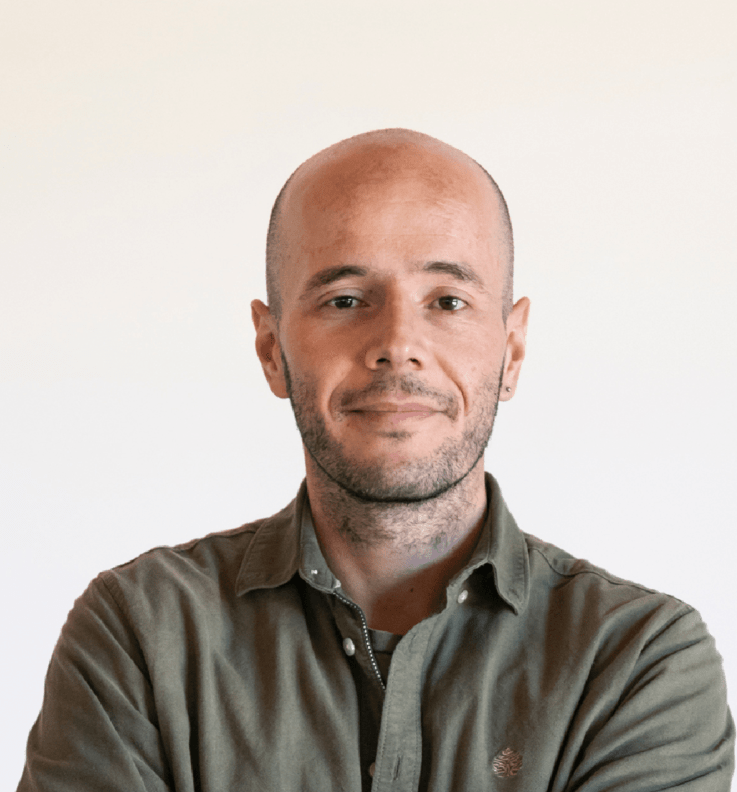ICEERS | 11 May 2023
Is there such a thing as a bad ayahuasca trip? In the final installment of our interview series with David Londoño (read part 1 here, and part 2 here), psychologist and coordinator of the ICEERS Support Center, we explore difficult experiences with ayahuasca. Do bad trips exist? How can they be prevented, managed, and integrated? What roles do the cultural context and therapeutic support play? David shares his outlook on the subject and offers us some fundamental points when facing this type of situation.
The concept of “bad trip” comes from psychedelic and LSD culture. Is there such a thing as a bad ayahuasca trip?
I don’t like to use the expression “trip” when talking about master plants. The work of master plants is work, not a trip. I think it is not appropriate to extrapolate one to the other. In the cultures of origin these plants are observed with great respect and have a link with the sacred. They are never taken lightly or recreationally. That being said, can someone have a difficult experience? Yes, they definitely can. Subsequent integration work is often focused on those experiences where “something went wrong” in order to reframe them. People who say “the plant damaged my brain,” or “I was healthy and now I’m sick,” or “I’m paranoid and depressed. I don’t leave the house,” or “I feel like I’m God,” are examples of people in a place of risk.
Part of the work we do at the ICEERS Support Center is to help the person understand that many times it’s not that something went wrong with the plant, but that the plant brought out something that was already there. In my experience, almost every time a person experiences a bad trip, that situation was already present in their life before. Often, if one looks closely, there were already symptoms of depression, paranoia, narcissism, or some other type of fragility. Then the person realizes that the experience with the plant speaks to their life. Then you can move from a “bad trip” to a “hard truth.” Accepting and working with those hard truths can lead to healing as well.
That is not to say that facilitators or guides don’t often mismanage situations and cause people to harm themselves. This can be psychological harm, mixing substances that should not be mixed, a lack of knowledge on the guide’s part, abuses of power, or by ignoring the energetic aspects, which is also quite common.
Shouldn’t someone come out of an ayahuasca session, if not better, at least not worse?
It depends. Sometimes ayahuasca allows the person to go deeper into something they were denying for a long time. For example, ayahuasca allows a person to get in touch with a depression that they were avoiding for years, or it opens a mourning that the person had blocked. They finally open to that mourning or deep, hidden anger. Getting in touch with that can allow them to move forward and resolve these conflicts. Therefore, people can sometimes take ayahuasca and come out sadder or angrier than before.
It is interesting to consider what the criteria is to define if a session was good or not. There are other criteria beyond simple momentary well-being. There are people who say that it went wonderfully because they had pleasant visions. From other points of view, this can be considered an evasion. For some healers, however, a confronting session is one of the best sessions there can be.
If you come out of the experience more conscious than before, it is positive even in spite of the pain.
I think so. When the session involves contact with pain, it is not something gratuitous, but with a trajectory towards health. Sometimes being able to feel certain pain is therapeutic. Our culture does our best to avoid feeling pain. If it hurts a little bit, we take a painkiller, and if it is emotional, an antidepressant. We do not tolerate pain. At the same time, there is a social pressure towards pleasure, comfort, and happiness. However, being able to connect with pain is very healing in the right framework.
Has there been an increase in the improper mixing of plants and psychoactive substances during rituals?
I think it is a reflection of consumerism brought to master plants. People are already keeping track of how many dietas and ceremonies they have done. They think that the more they do, the better and the more “spiritual” they are going to become. This is another aspect of greed. This need is driven by a false promise coming from the psychedelic movement, and an unhealthy optimism where many people have been told that there is a quick, painless, and effortless cure without much personal work. There is a supposed shortcut to health and spirituality. I think it is a great deception and illusion. What I see are people who hurt themselves and waste their time, resources, and energy. I do not deny that there can be great advances, but they are not the miraculous resolutions that are advertised on billboards with Hollywood stars, “In one night I solved what I did not solve in seven years”. That’s a big hoax.
This is not only happening in the West. Healers in the jungle are also adding psychoactive plants to the mix to enhance their client’s visions.
That is happening in some cases. For Westerners, visuals are fascinating and dazzling. For many healers in Peru, once an ayahuasca session is over the important thing is whether or not you vomited. In fact, many refer to ayahuasca as “the purge.” For them, the focus is not on the visuals, but on the cleansing effect the plant gives you. Here we encounter two worlds: one with a lot of material wealth, and the other with material lack. People from the Global North demand visuals and ask for quick results. Someone comes to the jungle and says, “Give me more ayahuasca, give me more visions, and I will pay you more.” Finally, in some places, customs are being adapted to cater to the demand of foreigners.
It is mercantilism in action.
Mercantilism in action, that’s right. In some places, they do ayahuasca retreats where they offer an enormous amount of sessions in short succession, much more than people can healthily integrate. There are many people who have issues afterward. In the traditional world this is never done, the work is progressive. It’s like when you go to a gym. You build muscle little by little. You don’t do it all at once because otherwise you could get hurt. The same goes for plants and dietas.
What do you think about using antipsychotics to stop a “bad trip”?
I don’t think there are absolute answers here. There are “bad trips” that are very dangerous. If a person feels persecuted by others, and starts attacking others to protect themself, that is a situation that needs to be stopped. If psychiatric medication has to be used in this situation, it must be done well and with the right timing. Of course, a good filtering process and a well run session is ideal to avoid these situations from happening in the first place. With proper practices before and during the session, and the number of problematic cases are greatly reduced. On other occasions, it is necessary to accompany the person so that they can go through the experience in the most therapeutic way possible without interrupting it, but this is not always possible.
In neo-shamanic circles, there is often a stance that rejects conventional medicine, psychology, and psychiatry. However, my experience in Peru was that many people’s lives could be literally saved thanks to timely, careful, and appropriate psychiatric, psychological, and pharmaceutical interventions. It is not a question of returning to an idealized primitive past that does not belong to us, but rather to integrate medicines, knowledge, and forces. It again is a question of integration, but now in the sense of integrating knowledge.
These medications are tools. They can be abused or well used, just like plants.
Is there a plant equivalent to the antipsychotic among Indigenous shamans?
For one thing, they don’t necessarily use our same concepts of illness. “Psychosis” is not necessarily a category that has an “antipsychotic” in it. Having said that, there are for example plants that are much more associative than dissociative. Some plants clear the mind, strengthen our roots, and stimulate connection to one’s own body, sense of self, and boundaries. Indigenous healers have many tools beyond specific plants. For example, an ayahuasquero who is well trained can lower the effect of the plant with a suplo or through chanting, or can “absorb” the effect of the ayahuasca or pass it to another person, or take it for themself. There are also plants that help to lower the “dizziness.” They have very sophisticated knowledge and skills to intervene in the intensity of ayahuasca during its medium and long-term effects.
Check out the ICEERS Academy courses.
Illustration by fszalai on Pixabay.
Categories:
NEWS
Tags:
ayahuasca
, traditional medicine
, interview
, support
, integration


